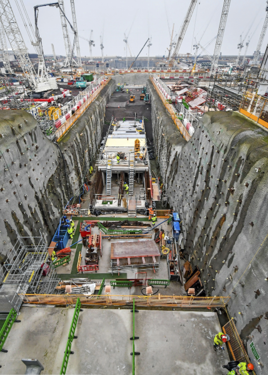Private investors
Private investment in rail divides into two areas: infrastructure and rolling stock.
The latter category has been one of privatisation’s success stories. Private investors have ploughed billions into new trains. They have done well. The original three rolling stock companies bought British Rail’s fleets for a good price (from their perspective) and have made handsome profits since. The market has attracted new entrants, which is a sign that there’s money to be made.
Those profits also attracted complaints - not least from government ministers who called in the Competition Commission to investigate the market. In its report in 2009, the commission aimed most of its recommendations at the government.
Meanwhile, the government was becoming a major player in the market by leading several procurements - originally, 1,300 vehicles for the Intercity Express Project (IEP), 1,200 for Thameslink, 65 trains for Crossrail, and 60 trains for High Speed 2.
When the National Audit Office examined the IEP and Thameslink deals in 2014, it reported that DfT wanted to transfer risk to private train service providers. It added that it was too soon to say whether the deals provided value for money because the trains were not in service.
IEP entered service in 2017, ten years after DfT launched the programme. Aspinall would likely have been appalled.
Since introduction, cracks in IEP trains forced a temporary withdrawal. Manufacturer Hitachi (part of the consortium which funded and owns the IEP fleets) is footing the bill, which shows that DfT has delivered some measure of risk transfer, although it must be said that Hitachi’s bill also covers similar trains procured entirely privately.
On the plus side, DfT as contracting authority could insist IEP included bi-mode trains, which brought benefits the private sector had not delivered. And it could push a deal that was long enough to attract private investors, so easing taxpayers’ burdens. Shades of client competency.
Rolling stock companies face risks from their trains lying idle. One such fleet is the 30 Class 379 electric units. Operator Greater Anglia cast them aside when it procured new stock, despite the ‘379s’ being only 12 years old. Had DfT not cancelled several electrification projects, it’s possible that the ‘379s’ would still be running. Instead, their owner has an asset earning no return.
Overall, the rolling stock market is not plain sailing, with government decisions the major factor.
On the infrastructure side, nothing happens without government’s approval, usually because it’s footing the bill. Of course, it has a statutory role in approving major projects, even when it’s not funding them, by authorising Development Consent Orders or Transport and Works Act Orders.
Leaving that role aside, there’s great reluctance in government to spend money on rail projects. And if government is unwilling to spend, it’s little surprise that the private sector is unwilling.
One project that’s stuck between the two is the plan to build a rail link into Heathrow Airport from the west. This would enable direct trains to run into the airport from a wide range of destinations in western England, Wales, the Midlands, and even northern England, given that CrossCountry usually runs into Reading from north of Birmingham. Add local trains from the Thames Valley to the mix and you open up more public transport options for airport workers to reach Heathrow. It could encourage people to switch from road to rail, helping to lower carbon emissions.
Government asked Network Rail in 2012 to start planning. It expected funding to come from Heathrow Airport itself, but when the pandemic struck in 2020, it became clear that the airport couldn’t or wouldn’t pay, so if the scheme is to go forward it needs government to pay for it.
It needs a Development Consent Order (DCO) before building can start, and Network Rail notes that funding (from government) must be in place before it can apply for a DCO (from government) via the Planning Inspectorate.
The inspectorate’s latest update is from October 2020. It anticipated a DCO application in November 2021, with major building starting in 2025 and an opening in 2029 or 2030.
In January 2021, NR’s board agreed to halt work on the project and deploy staff to other work. So, it’s taken almost a decade to fail to progress a 6.5km railway, mostly in a tunnel, to Britain’s busiest airport. This hardly inspires private sector investment.
Even when there is funding, project delivery takes a long time.
North Yorkshire County Council applied in 2013 for money to progress its ambition for half-hourly trains on the Harrogate-York line. Initially, it thought the answer was longer sections of double track. Analysis by NR showed that it was better to improve signalling by replacing Electric Token Block working with token-less block working and alter track around Cattal to permit higher speeds. NR finished the upgrade in December 2020.
Whatever benefits the council was looking for, they are not likely to be commercial in the way a private company would seek.
The improved service makes it easier for people along the line to reach York or Harrogate, whether for business or pleasure. They may switch from road to rail, which might bring carbon benefits. The council’s spending might be helping local residents, or it might be ‘buying’ cleaner air. Whatever it is, it’s hard to see where a private sector investor would generate a cash return from projects such as this.
There’s no income stream to be had from cleaner air. There may be financial benefits for the NHS in 20 years’ time, from having a healthier population. If there are, they would fall to government as the NHS’s funder. That pushes the funding onus towards government because it’s the custodian of national benefits.














